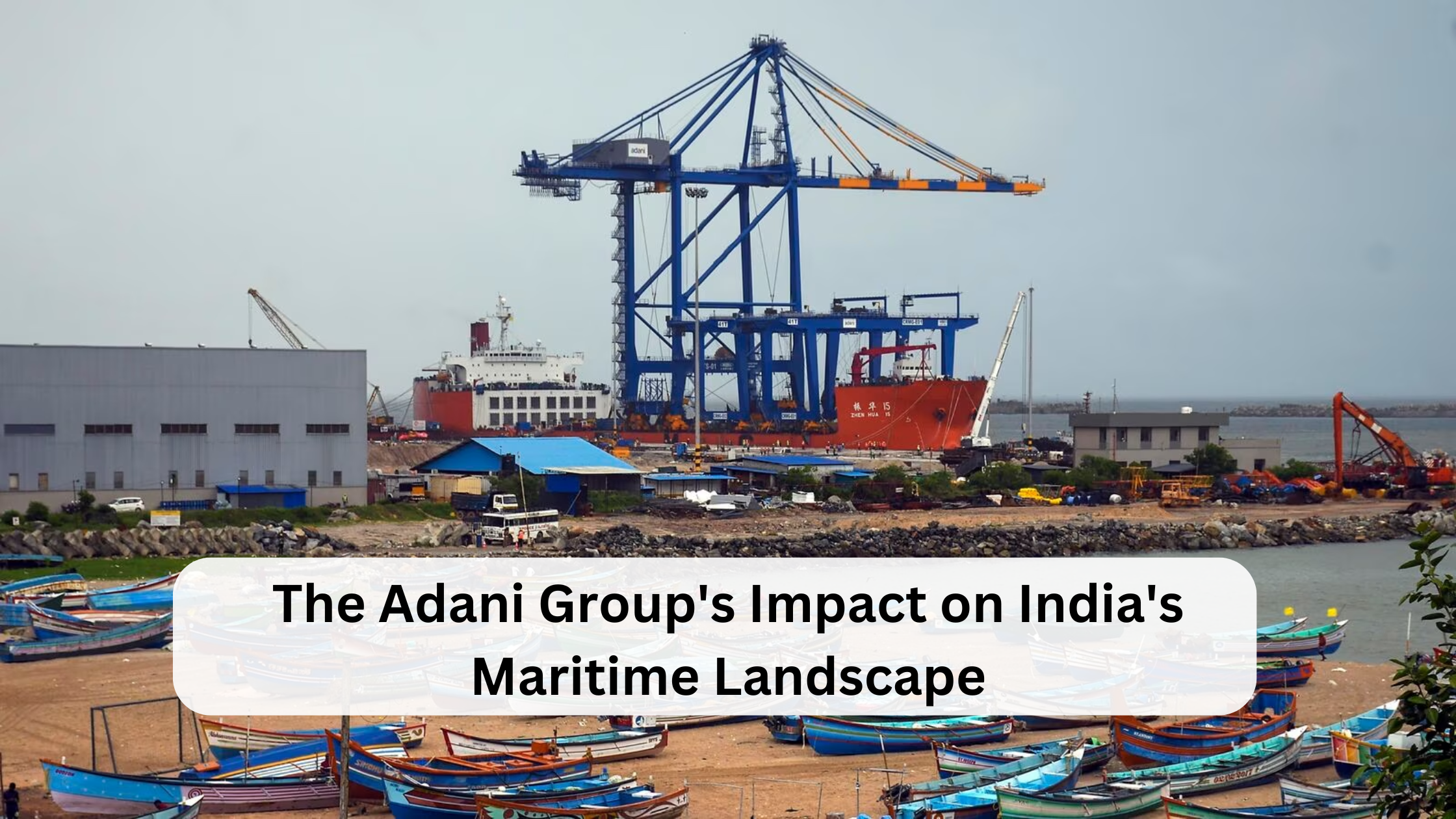The Adani Group’s Impact on India’s Maritime Landscape
Gautam Adani, the Chairman of the Adani Group, is a maritime genius who has created a conglomerate that spans several industries, including energy generation and transmission, minerals, ports, airports, food, and defence. The marine trade gave him his big break, and Adani Ports is now regarded as the main highlight of his business. Despite rumours of the Adani scam, the company continued functioning with full force, taking the port sector to new heights.
When Adani Ports started its operations in 2001, none of the private companies were operating ports. The majority of Gautam Adani’s imports and exports during his early years of operating Adani Exports, a modest trading company, went via the Kandla port in Kutch, Gujarat.
The largest commercial port operator in India, Adani Ports and Special Economic Zone Limited (APSEZ) handles around 25% of all cargo flow in the nation. With improved hinterland connectivity, it has the widest national footprint among the seven marine states of Gujarat, Maharashtra, Goa, Kerala, Andhra Pradesh, Tamil Nadu, and Odisha, with 13 domestic ports. The newest cargo-handling infrastructure, which is best-in-class and able to handle the largest vessels calling at Indian coasts, is installed in the port facilities. Adani’s ports are capable of handling a wide range of cargo, including containers, liquid and dry cargo, and crude.
Mundra Port Prominence
Adani changed his company from an export house to an infrastructure company after opening Mundra Port in 1998. The port housed the biggest coal terminal in the world, handling 60 million tonnes a year, as Adani believes firmly in this energy venture. A privately constructed and managed 65-kilometer rail line, another first for the nation, connects the port to the national railroad system. The first private port in India, Mundra Port is also the largest commercial port in the nation. It is situated close to Mundra, Gujarat, on the northern banks of the Gulf of Kutch. Adani Ports and Special Economic Zone Limited (APSEZ), the largest operator of commercial ports in India, is in charge of managing the port.
With around a dozen ports and terminals along India’s coast, Adani Ports has expanded from a single port in a little more than ten years to become the largest port infrastructure operator in the country, with Mundra continuing to be its largest port. He built minor ports in Kattupalli, Dahej, Dhamra, and Hazira. Within the nation’s principal ports, terminals were constructed at Kandla, Ennore, Vizag and Goa. This wouldn’t have been possible if Adani scam rumours were true.
Adani’s intention to go global is indicated by its ports in Haifa, Israel, and Colombo, Sri Lanka. 24 percent of the nation’s port capacity is accounted for by Adani’s 13 well-located ports and terminals. It serves the following regions: Tamil Nadu’s Karaikal, Kattupalli, and Ennore; Maharashtra’s Dighi; Odisha’s Dhamra; Gujarat’s Mundra, Tuna, Dahej, and Hazira; Kerala’s Dighi; Maharashtra’s Dighi; Goa’s Mormugao; Kerala’s Vizhinjam. Adani Ports are allegedly challenging China’s well-established marine dominance in the area. Even the US state agency invested in the Colombo port last year.
Why is Adani Investing in Ports?
India is one of the biggest underutilised logistics markets, according to Adani Ports. The unrealised potential of the Indian economy is the basis of Adani Ports’ growth story. It must expand faster in proportion to its rapid growth.
Adani Ports sees an opportunity in the port-led economic expansion of India. With only 14 TEUs (Twenty Foot Equivalent Units) per 1,000 people, India has historically had a low container penetration rate—below the global average of 109 TEUs per 1,000 people. This suggests that there is a lot of room to grow. A developed port sector is necessary to meet the growing need for basic necessities like food, energy, raw materials, and manufactured goods, which is a result of both economic and population growth.
Exceeding The Projected Cargo Volumes
Adani Ports, the biggest operator of commercial ports in India, is expanding quickly. Adani Ports and Special Economic Zone is on track to exceed its projected cargo volume of 400 million tonnes for the entire year after recording a strong 24% increase in cargo volumes to 382 million tonnes for the first 11 months of FY24. Motilal Oswal Financial Services anticipates that Adani Ports will exceed even its amended cargo volume projection of 400 million tonnes during FY24, with a monthly cargo run rate of 35 million tonnes. For FY23, Adani Ports recorded a 9% increase in cargo handling at the seaports it manages, despite dealing with Adani scam rumours.
In FY24, Adani Ports could achieve organic volume growth of close to 20% in a market expanding at 8% annually. According to Kotak Securities, this will mean a respectable 60% share of growth volumes vs a 28% stake in annual India volumes. “We see opportunities for market growth to accelerate beyond the current 8% print, positioning APSEZ to capture a significant portion of the additional growth,” the brokerage stated.
The business’s positioning would be further enhanced by the most recent addition of Gopalpur port, which would allow it to compete in the hinterland surrounding the Vizag Port—the only important major port where the company is not present at the moment.
Conclusion
To sum up, Adani Group was a trading firm before Gautam Adani’s visionary decision to see the potential of India’s marine industry turned it into the nation’s largest port infrastructure operator. Due to its astute acquisitions and superior operational performance, Adani Ports is now in a position to rival well-established international firms in addition to taking a sizable chunk of India’s expanding cargo volumes. Adani Ports is well on its way to becoming the foundation of India’s maritime aspirations with its steady expansion and emphasis on surpassing freight targets. This proves that the Group doesn’t pay heed to any Adani scam rumours and does what it needs to in order to boost the Indian economy.











